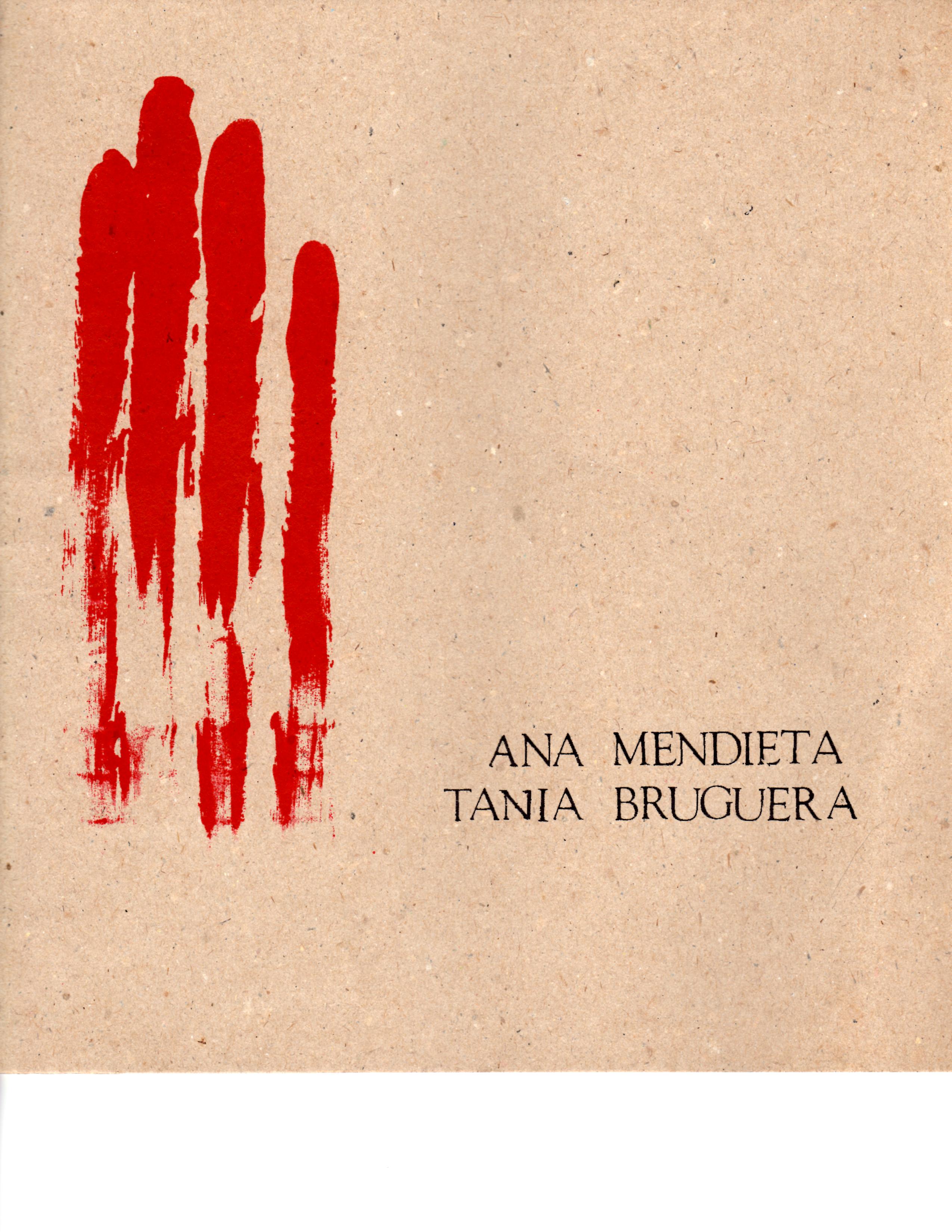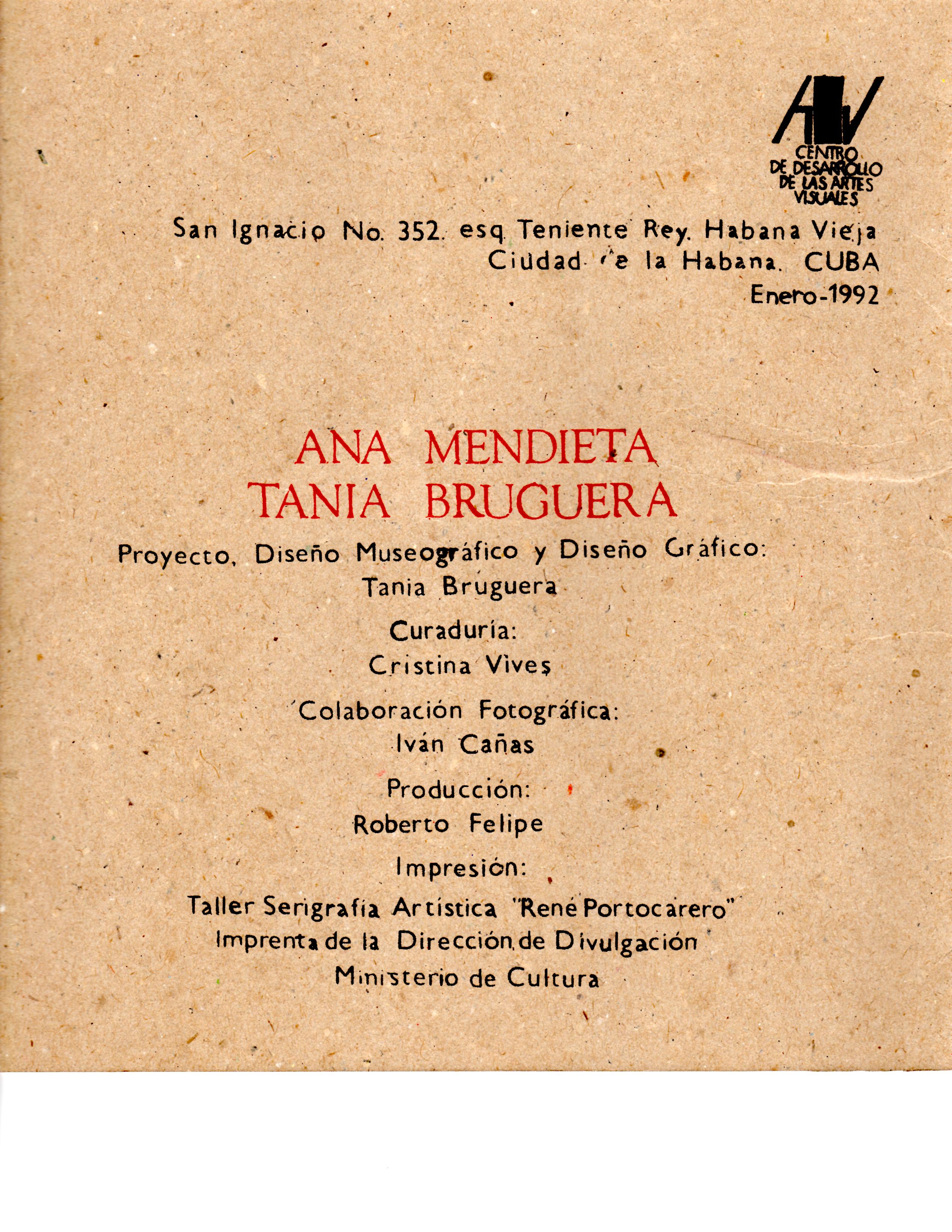Gerardo Mosquera
January 1992
From: Mosquera, Gerardo. “Tania Bruguera / Ana Mendieta,” Ed. CDAV. Havana, Cuba, 1992. p. 2.
Tania Bruguera / Ana Mendieta
by Gerardo Mosquera
Ana Mendieta and her art are just one and the same piece. I do not know of any other case where artistic creation is so deeply linked with individual existence. Her art is a compensating rite for her individual tragedy, an imaginary solution for her impossible longing to return, in terms that are at the same time ethnic, Freudian, social and political.
She describes her work as an affectionate return to the womb. It is as an imaginary solution, through art, of the drama of a sensitive child compelled to leave her country, her family, her habits and friends and end up in a foreign land. This traumatic experience marked her life as a grown-up woman. She has said she had an option: to be a criminal or to be an artist. If we examine her professional career, we see art has been for Ana a way to compensate her inner tearing, of sublimating an obsession.
We can see it in the very structure of her work. It is affiliated to earth art, but there is a trait distinguishing it from the normal implementation of this trend. As a rule, in earth art natural materials are proclaimed by displacing them from their original context to give them a hierarchy in a different one or by introducing suggestive changes in the natural milieu itself, almost always in a large scale. It is earth with the will of human beings in mind. In Ana we find a more modest attitude: it is human beings who go to earth, who integrate with the natural environment. Ana does not go to it with the purpose of forcing it, but to secure an intimate fusion. She does not intend to transform, but to participate.
We are before an ecological art in the full meaning of the word. Between nature and the human figures Ana integrates as representations of her own body there is no contradiction at all. There is a harmonic coexistence between the woman and the landscape. And, at the same time, a return to the origin. I cannot but feel a dramatic element in this girl who runs to the woods to obsessively try to make her image join the primary pureness of earth.
Ana uses herself as a metaphor. More than a sort of union of earth and body art, her work is life-art. Her expression goes beyond physical symbolism and fills itself with implications from life and culture. It is also a general image of the drama of cultural split and the will to overcome it.
In Cuba Ana was closely connected with a group of rather younger artists, those in Volume I, who were trying to carry forward a cultural renovation. This relationship proved worthwhile for them all: she shared her larger experience and information with them and they helped her in that “return to the origins” which is at the basis of her entire work. She also opened an exchange “over and above the blockade” between artists, critics and cultural institutions in Cuba and the United States which still continues today and to which she has always attached great importance. This is another work of hers that is still alive.
In the occasion of this sample, I would like to remember the first work Ana exhibited in Cuba exactly ten years ago. It was 25 sq. cm. of red earth, the very fertile “tierra colorada”, in which five hearts made with palm roots were buried. It was a summary, a synthesis, a lineal statement. But I have never seen anything closer to a declaration of love.
Because of many reasons, Ana is still among us.

